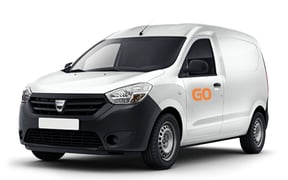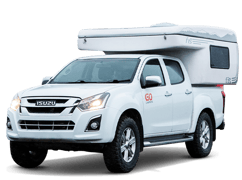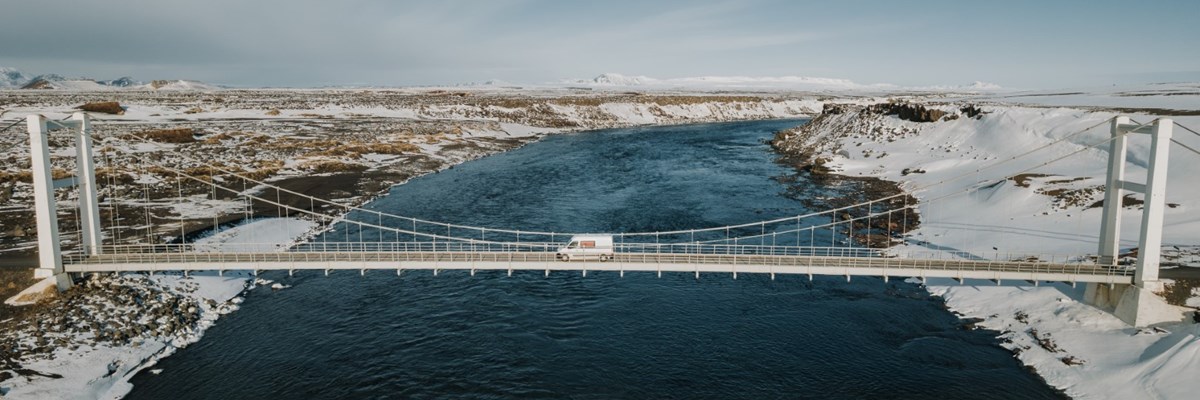
The Best Time to Go to Iceland: Unlocking the Seasons for Your Ultimate Adventure
Go to chapter
- Unlocking the Perfect Icelandic Adventure with Go Campers: Choosing the Optimal Time to Visit
- When Is the Best Time to Visit Iceland?
- Autumn (September - October)
- Winter (November – Early March)
- Spring (Late march – May)
- Summer (June – August)
- How to Choose When to Visit Iceland?
- Does Iceland Have Daylight Savings Time?
- Which Season Are the Most Music Festivals in Iceland?
Unlocking the Perfect Icelandic Adventure with Go Campers: Choosing the Optimal Time to Visit
Deciding the optimal moment to visit Iceland and secure a camper van rental is pivotal, and our comprehensive guide on camper van rentals in Iceland proves to be an invaluable resource in this regard. Delve into this guide to not only choose the ideal vehicle for your expedition but also to align your travel plans with the nuances of Iceland's seasons. Whether you're captivated by the mesmerizing dance of the Northern Lights in winter or enticed by the endless daylight of Icelandic summer, our guide ensures you make an informed decision. With a camper van Iceland rental, seize control over your travel schedule, relishing the luxury and ease of a mobile home. Traverse Iceland's wonders effortlessly, basking in good weather and the extended hours of daylight, optimizing your travel experience, regardless of the season.
When planning your journey to Iceland, timing is key to make the most of your adventure. If you're considering the best time to visit Iceland and rent a camper van, our guide on camper van Iceland rental can be a valuable resource. Choose the perfect vehicle for your travel season, whether chasing the enchanting Northern Lights during the winter or exploring the endless daylight of the Icelandic summer. With a camper van Iceland rental, you'll have the freedom to travel at your preferred time while enjoying the comfort and convenience of your mobile home. Explore Iceland's wonders with ease and make the most of your travel experience, regardless of the season.
When Is the Best Time to Visit Iceland?
Many people might be wondering when the best time to visit Iceland is. So when planning a trip, it's important to know what you're in for at any given time of year.
Deciding when to visit Iceland is a crucial aspect of trip planning, as each season unfolds a unique tapestry of experiences. Whether you're drawn to the ethereal glow of the Northern Lights, the vibrant hues of lupine-covered landscapes, or the challenge of conquering highland roads, understanding Iceland's seasonal nuances is key. While it's true that each season presents its own set of advantages and challenges, there isn't a singular "best" time to travel in Iceland.
To help you make an informed decision, let's unravel the Icelandic seasons and what they offer. From the mystical darkness of winter with its snow-covered panoramas to the explosion of colors in spring and the endless daylight of summer, each period has its allure.
Regardless of the time zone differences you may encounter, diving into the intricacies of each season allows you to tailor your visit to match your preferences. So, read on, discover the Icelandic seasons, and discern the ideal time for your journey.
Autumn (September - October)
- Shoulder Season Camper Prices
- Good for: Hiking, Northern Lights, Picking Wild Berries, Whale Watching.
As the curtain falls on summer and transitions into autumn, Iceland undergoes a breathtaking transformation, painting the landscapes with a riot of colors – a splendid canvas adorned in rustic reds, yellows, and oranges. This shoulder season, spanning from the end of August, is a gem for those seeking an immersive experience in Iceland's diverse offerings, catering particularly to enthusiasts of hiking in Iceland.
The weather during this period can be characterized as capricious, with frequent showers glossing the roads, often giving way to sunshine propelled by vigorous winds or, on occasion, unleashing formidable storms. Despite this unpredictability, the rapid shifts in Iceland's weather promise a medley of good days.
Autumn unveils the opportunity for an enchanting activity – berry picking. Venture into the countryside and discover abundant blueberries and crowberries scattered across various locations in Iceland.
One of the prime attractions during this season is the return of the Northern Lights, gracing the Icelandic skies with their mesmerizing displays. While winter nights offer prolonged darkness, it is in September and October that the skies are exceptionally clear, providing optimal conditions for spotting this celestial spectacle. The unique amalgamation of autumnal hues during the day, accompanied by rain and dark nights, offers a well-rounded encounter with Iceland's distinctive weather.
Whether you're an avid hiker or a Northern Lights enthusiast, the autumn months beckon with a tapestry of experiences, inviting you to embrace Iceland's shoulder season in all its splendor.
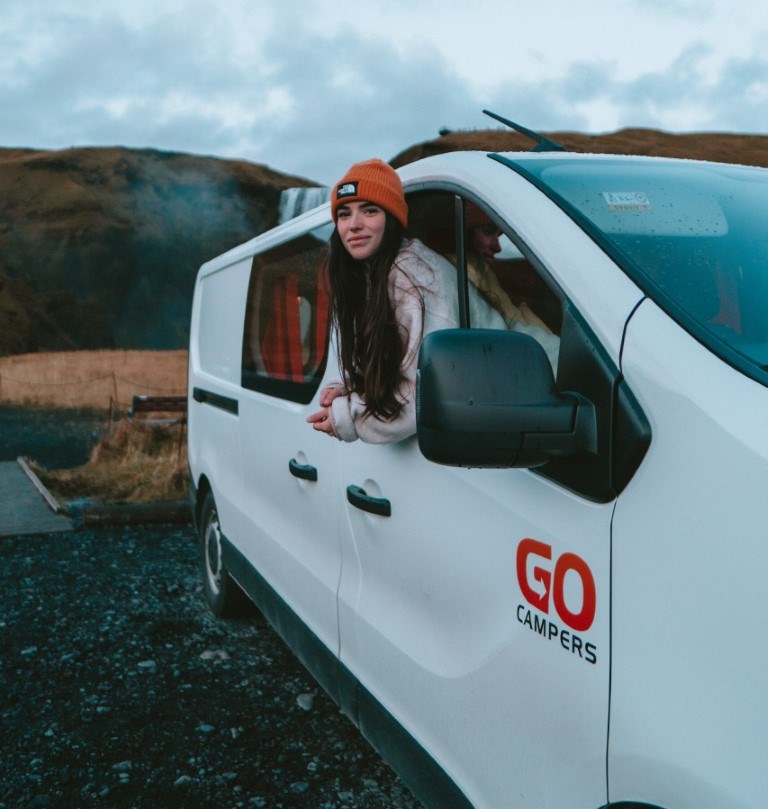
Winter (November – Early March)
- Low-Season Campervan Prices
- Good for: Northern Lights, Winter Sports, New Year's Eve, Ice Caves
Iceland's winter season, spanning from November to early March, unfurls a dramatic spectacle of snow-covered landscapes that stands unparalleled. As darkness blankets the country, the sun graces the sky for a mere 3-4 hours before gracefully bowing beneath the horizon. While the Icelandic winter may seem formidable to some, the experience of immersing oneself in the Arctic wonderland is truly incomparable.
Venturing into the heart of winter weather unveils a mesmerizing panorama, especially along the South Coast, where behemoth glaciers reign supreme. The stark contrast of the darkened surroundings against the pristine snow-covered expanses creates a surreal atmosphere that captivates the senses. An opportunity to witness Iceland's natural beauty in a state of serene tranquility.
An absolute highlight of the winter season is exploring the ice caves beneath Vatnajökull, a once-in-a-lifetime experience that reveals the hidden wonders of this frozen realm. As the winter weather transforms the landscape, these ice caves become accessible, inviting adventurers to marvel at their crystalline formations and ethereal beauty.
Though the Icelandic winter has its challenges, getting into it gives you a special chance to see the country's wild, untouched beauty. Join us in unveiling the Arctic splendor and frozen marvels that make winter in Iceland an enchanting chapter in your travel story.
The longer hours of darkness also mean that there is a lot more time to see the northern lights, and while they‘re amazing in the autumn and spring, there‘s nothing quite like seeing them shimmer and dance over a tranquil snow-covered lava field or a waterfall encased in ice. Driving the camper through the magical snow-covered landscapes is an inspiring adventure in itself. And yes we do fit all our campers with studded winter tires during the winter season.
The winter in Iceland is when the weather is at its most volatile; blizzards and fierce winds can overwhelm the country, hiding roads beneath snow and sheets of ice. But despite what many think, there isn‘t usually snow cover for the whole season. Rain can sweep in and melt away the snow, revealing a stark contrast of colors throughout the landscapes.
Nature is right at the forefront during this time, and even the best of plans can get thrown out the window when the weather turns, so it's important to stay flexible and have a backup.
The good news is that it isn‘t all dark – Reykjavik during the Christmas period is a treat, and the locals enjoy the city underneath thousands of twinkling Christmas lights, the cozy bars downtown spilling over with mulled wine and specialty Christmas beers. New Year's Eve in Reykjavik is also amazing, with the entire population getting their hands on some fireworks to let off all at once over the city when the clock strikes midnight.
For more tips and information about renting a camper in the winter, check out this article.
Spring (Late march – May)
- Shoulder Season Campervan Prices
- Good for: Puffins and Whale Watching, Hiking, Longer days for better exploring.
During the short Spring that Iceland experiences, the sun lingers for longer in the sky, warming the country and helping to melt the snow that covered Iceland in the winter. As the green slowly creeps back across the land and flowers begin to return, so too do the sea birds (including the puffins), flocking to the country in droves to nest on the cliffs along the coastline. In our opinion, this is one of the best times to visit Iceland.
Fields burst with the radiant hues of lupine, creating a visual spectacle that is nothing short of enchanting. This is an opportune time for those yearning to explore Iceland's lesser-known gems, away from the hustle and bustle.
Fields of lavender-colored lupine burst across the fields, injecting color back into the world and framing Iceland's mountainous landscapes beautifully. Fewer crowds gather at the famous attractions, such as Gullfoss, the Blue Lagoon, and Jökulsárlón Glacier Lagoon.
However as always, the weather can be unpredictable, and there is always the possibility of snow even as late as May. Despite that, Spring is one of the best times of year to visit Iceland; the longer days mean more daylight to explore, and when it does get dark there is still a good chance to see the northern lights until late April.
Also, during the spring months, there is a great atmosphere in the country, with the whole population waking up after the long winter and getting excited for the oncoming summer and the return of the sun.
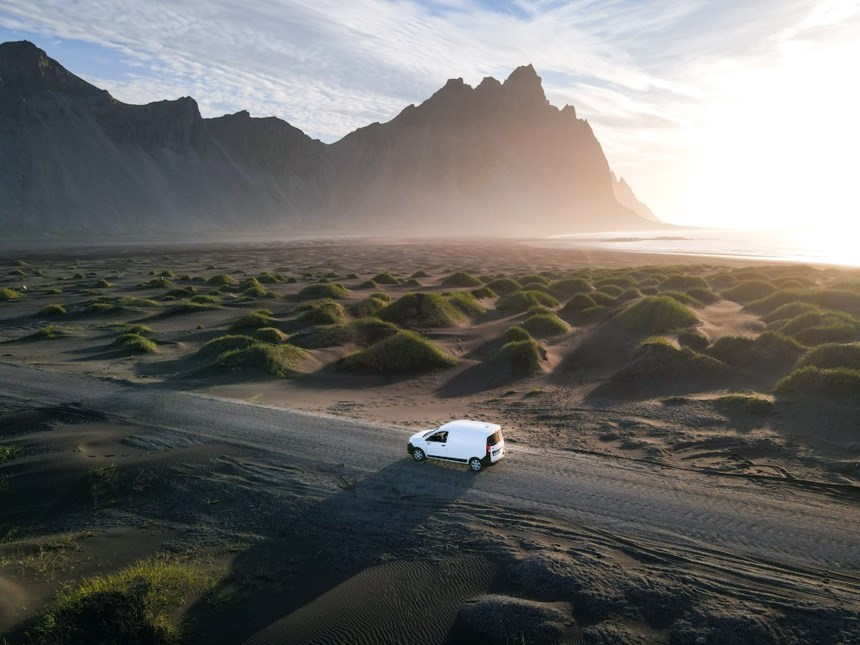
Summer (June – August)
- Peak Season Campervan Prices
- Good for: 4x4 Highland Adventures, Puffins, The Laugavegur Trail, Festivals, the Midnight Sun, all campsites are open in Iceland
Summertime in Iceland is without a doubt the most popular time to visit the country. The long days mean that there is endless time for exploring, and the golden light that falls across the country highlights incredible details in the mountains, glaciers, and lava fields. The midnight sun can be seen around the Summer Solstice, which falls somewhere close to the 21st of June.
In the symphony of seasons, summer takes center stage in Iceland, transforming the landscape and beckoning travelers to explore its diverse offerings. Not only does this period boast milder weather, but it also marks the gradual opening of highland roads, unlocking the gateway to the pristine Icelandic Highlands. This, coupled with the allure of numerous activities, positions July and August as the unequivocal best time to go to Iceland.
Venturing into the Icelandic Highlands during summer is an immersion into some of the planet's most volatile and untamed nature. Embarking on this journey with a 4x4 camper, conquering challenging mountain roads, ensures an expedition etched into the core of your travel memories.
Beyond the rugged terrains, summer in Iceland unveils cultural delights. Under the perpetual glow of the midnight sun, take a dip in geothermal swimming pools, embracing relaxation amidst stunning surroundings. For an authentic Icelandic experience, consider horseback riding excursions, traversing picturesque landscapes on these gentle and sure-footed companions.
The convergence of favorable weather, access to the Highlands, and an array of cultural activities makes July and August the zenith of Iceland's allure. Whether you seek the thrill of conquering mountainous roads or the serenity of geothermal pools and horseback riding, summer unfolds as the pinnacle of adventure and cultural revelry in Iceland.
Even though the country is more crowded during the summer, it never gets dark, meaning that you can reverse your clock and opt to visit the attractions early in the morning or late at night, avoiding the crowds. But this is Iceland - so don‘t expect beautiful sunny days for your entire trip!
Warm and sunny days can reach up to 25°C, but there are still days of rain and also intense winds. However, there are barely any road closures during this season, and access to the entire country is readily available. Reykjavik also comes alive during these months, turning into a bustling cosmopolitan city that never sleeps, and you can find several great festivals and cultural events to attend during your time here.
How to Choose When to Visit Iceland?
With all the above information, it can be hard to choose when to visit Iceland. Should you opt for the classic trip in June and July, or wait for the winter months? Of course, the best time to travel to Iceland is subjective.
We suggest for first-time visitors looking to do a campervan trip in Iceland, come in either the spring or autumn. The summer months are wonderful but often busy. In Spring and Autumn, you'll get a good dose of Iceland's dramatic weather (an attraction in itself!), free to visit the country's magnificent attractions around the ring road.
The best part about travel during these seasons is that you'll also have a good chance to see the aurora borealis at night. Picture yourself watching the dancing green northern lights from the comfort of hot springs, or after a long day touring the Golden Circle.
Does Iceland Have Daylight Savings Time?
Daylight savings time in Iceland is not observed - meaning the clock never changes. Iceland follows Greenwich Mean Time - the same timezone that Britain uses during the winter.
Which Season Are the Most Music Festivals in Iceland?
If you're traveling to Iceland and are looking into visiting some local music festivals, then your best bet is to visit in the summer. This is when the Secret Solstice Festival is on in Reykjavik, one of the highlights of the summer. Plenty of smaller, local festivals around the country as Icelanders look for any excuse to spend time outside in the fairer weather.

Traverse Iceland's wonders effortlessly, optimizing your travel experience irrespective of the season. Bask in good weather and extended hours of daylight as you embark on your Icelandic journey. Discover the best time to travel to Iceland with Go Campers, ensuring that every moment of your expedition is orchestrated for maximum enjoyment.
Go BackRelated articles
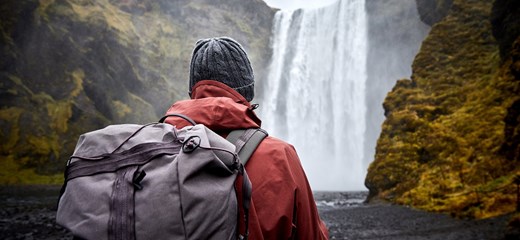
How to be a Good Tourist in Iceland
Although we know most of you are savvy world travelers, there are some general tips for traveling in Iceland that are always good to know. In a country as beautiful as Iceland, it’s important to travel thoughtfully, responsibly, and respect the country and its rules. Here are some of the main things that will help you be a good tourist when in Iceland.
Read more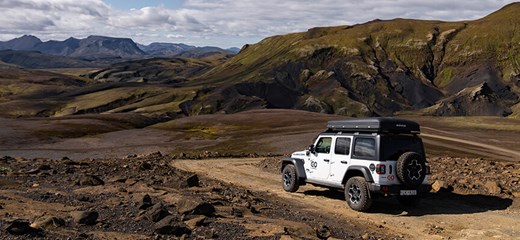
How to Drive on F-Roads in the Icelandic Highlands
Read on to give yourself the best chance at a successful adventure up into one of the most isolated regions in all of Europe; the Icelandic highlands.
Read more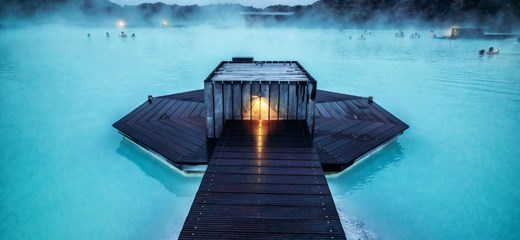
5 Things to Book in Advance on your Campervan Trip Around Iceland
Iceland isn’t all hiking in nature – there are some activities that are well worth booking ahead of time to secure your spot, especially as Iceland gets more and more popular.
Read more James Taylor
James Taylor